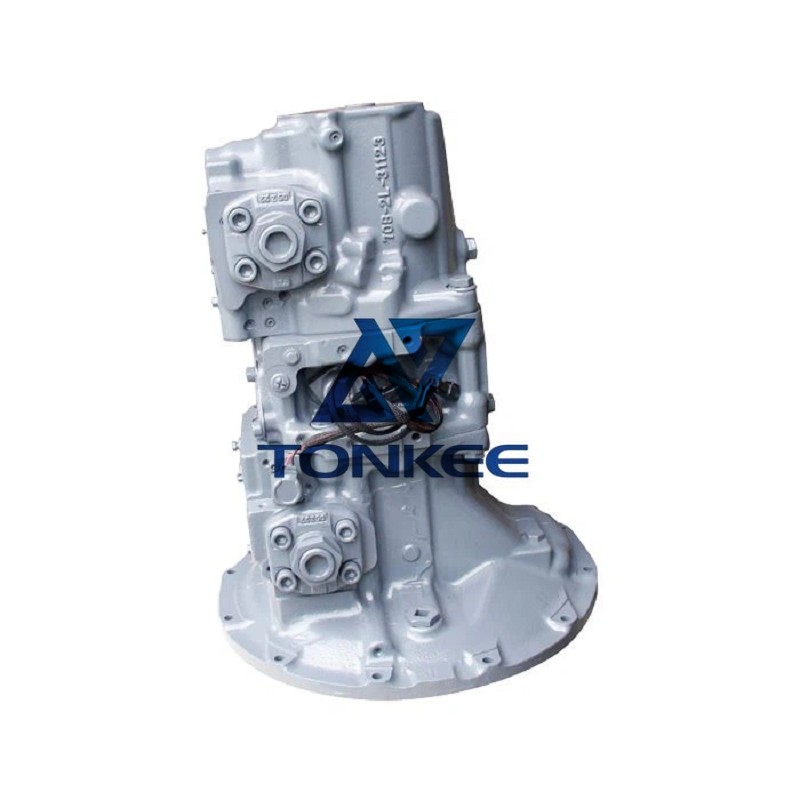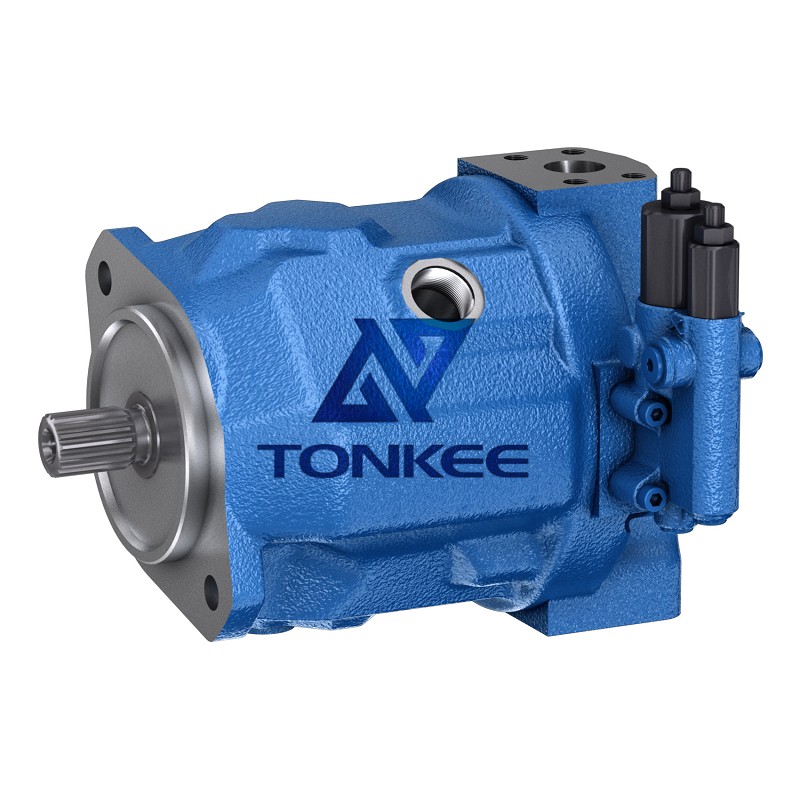
Pump Housing: The pump housing serves as the main body of the hydraulic pump, enclosing the internal components and providing structural support.
It is typically constructed from high-strength materials such as cast iron or steel, ensuring durability and resistance to heavy loads and external pressures.
Drive Shaft: The drive shaft is a critical component that transmits rotational power from the engine to the pump. It connects the pump to the engine's power source, allowing the conversion of mechanical energy into hydraulic power. The drive shaft is precision-engineered to withstand high torque and rotational forces, often made from hardened steel or alloy materials.
Piston Assemblies: The pump consists of multiple piston assemblies that reciprocate within cylinder blocks to generate hydraulic pressure. Each piston assembly comprises a piston, piston rings, and a piston shoe. The piston is responsible for sealing the cylinder and creating a pressure chamber, while the piston rings ensure proper sealing and lubrication. The piston shoe transfers hydraulic pressure from the pistons to the swash plate.
Swash Plate: The swash plate is a crucial component that converts the reciprocating motion of the pistons into a rotating motion, generating hydraulic power. It consists of a tilted disc or plate that allows controlled movement of the piston shoes. The angle of the swash plate determines the displacement and flow rate of the hydraulic pump. The swash plate is typically made of hardened steel or other wear-resistant materials.
Valve Plate: The valve plate regulates the flow of hydraulic fluid to and from the piston chambers.
It contains a series of valves, including inlet and outlet valves, that control the fluid flow direction and enable efficient pumping action. Valve plates are precision-machined to ensure smooth operation and minimize internal leakage.
Cylinder Block: The cylinder block houses the pistons and provides the necessary sealing surfaces for their movement. It comprises a series of cylindrical bores where the pistons reciprocate. The cylinder block is typically made of high-strength cast iron or steel and undergoes precise machining to ensure accurate piston movement and sealing.
Bearings and Seals: Various bearings and seals are employed throughout the main pump to reduce friction, prevent leaks, and maintain optimal performance. These include ball bearings, needle bearings, thrust bearings, and various types of hydraulic seals. High-quality bearings and seals are essential to minimize internal leakage and extend the pump's service life.





 English
English português
português Русский язык
Русский язык










